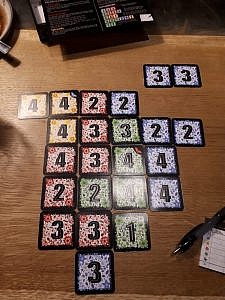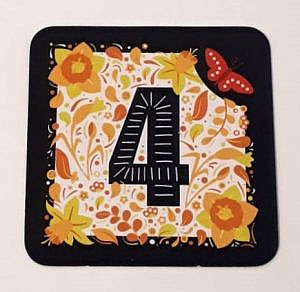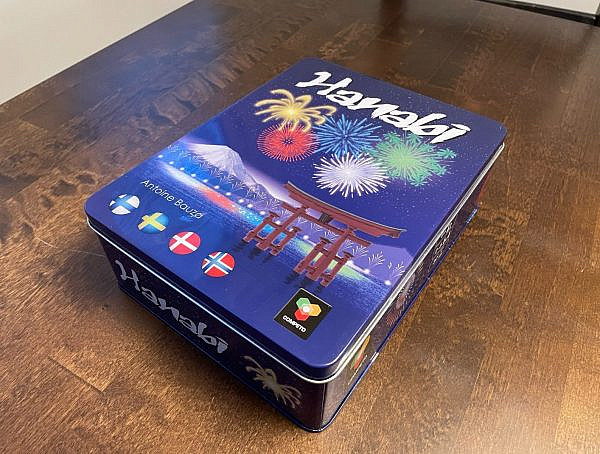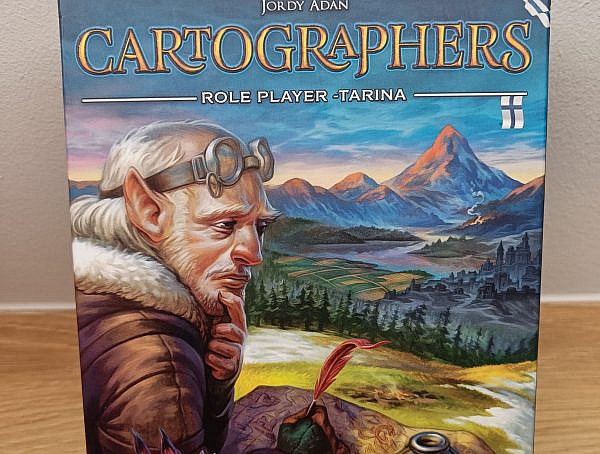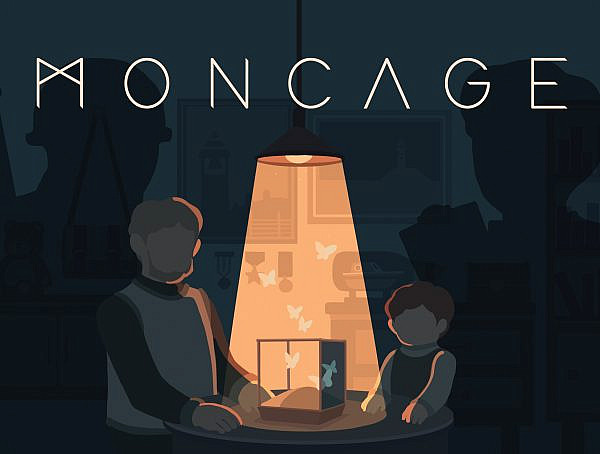A couple of weeks ago, I went to Spiel Essen, the world’s biggest board game convention. I was looking for a free game table with a friend and more randomly than not stumbled upon this card game called Flowers. The game was explained to us quickly and the two of us had a good time. The name is just a bit generic and confusing because there’s a bunch of games with the same name, even another one that was released in this year.
The Flowers I am talking about here is a tile-placing game. There are three equally big card piles in the center of the table, two of them with the cards face-up, the third with the cards face-down. When it’s your turn, you draw a card from one of those piles to add it to your own garden by matching the number on it with the cards you have already placed. A four needs to be in a group of four fours, a two with one other two, and so on. To avoid placing a card in a bad spot, you can put cards on top of other ones, although you will have to remove the whole pile at the end if the top card was placed incorrectly. When one of the draw piles is empty, the game ends. Because of this, rounds can be very quick.
To decide the winner, cards are counted, where each card equals one point. Like you can see in the picture, the number groups with the wrong amount of cards are removed and counted as minus points. Then, you go through the different color groups, gaining one point per card that is in a field of at least five tiles with the same color. Since you have to remove cards based on number first, it might completely ruin your flower bed. This order of events is what makes this game interesting: When you lay down your tiles, you need to add them based on number, but you also need to pay attention to the color because that is the main way to gain points. In terms of design, the colors do have different patterns, as well, which is important for colorblind people. I think it’s great that this is becoming more and more of a standard.
In addition, some cards have butterflies in the top right corner. For these, you can gain only one point per butterfly, if it is placed adjacent to a tile of the butterfly’s color. Unfortunately, this means the butterflies feel very negligible and, in my opinion, they should score as many points as there are correct adjacent tiles. Otherwise, they just don’t add a lot. Overall, the scoring system is very easy, it’s one point per correct card and correct butterfly, which means you don’t need to do a lot of math and you can quickly replay the game. Generally, the game is not very difficult (with a weight on BoardGameGeek of 1.33) and it works great as a filler for a 15-20 minute break. With two players, it takes the longest and you need more table-space because your flower fields might be be pretty large and more complex. Flowers also has rules for a single-player experience and a variant, which introduces another limitation of how you can place your tiles, although I have not played these.
As I had to learn when trying to explain the game to some of my other friends, the ruleset is not very detailed. For example, it is not entirely clear in a couple of things, like whether or not to count cards when they have been separated from the rest of the cards and there is a gap in between. And while there is an example image, it does not illustrate this case, which has been a question in most of the games I have played. Besides these difficulties, I have played the game four times now and, when explained right, it was always a fun experience. When you want a break from the crunchy, long board games or you are waiting for people to show up to your board game night, this game is ideal.
My final judgement: Flowers is fun, fast, and family-friendly.
Basic Information :
Designer: Paul-Henri Argiot
Publishers: Actarus Editions, HUCH!
Release date: 2024
Number of players: 1-4
Playing time: 10-20 minutes
Age rating: 7+
Photos taken by the author
I am a Game Studies student who is interested in difficult topics and conversations but prefers their games to be more casual and light. Mostly, I play board games and some video games, and I have dabbled into TTRPGs. I am open, though, and like to try new games.
You might also like
More from Game Reviews
Moncage Review: A Puzzle Game with Mind-Boggling Optical Illusions
Solving a huge #optical_illusion #puzzle in a tiny cube to discover a dark, #emotional story of trauma
Mining, Mayhem, and Bugs: A Deep Rock Galactic Review
Fight monsters, mine riches, and cause chaos with your dwarf crew — welcome to Deep Rock Galactic!
Microsoft Solitaire: classic games to kill time
Perhaps the most played games in offices worldwide, Microsoft Simulator is a pinacle of design from the era where games …







